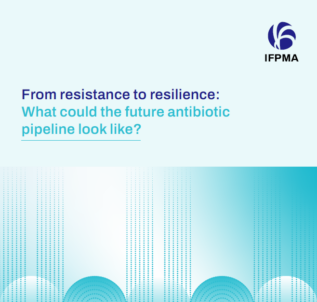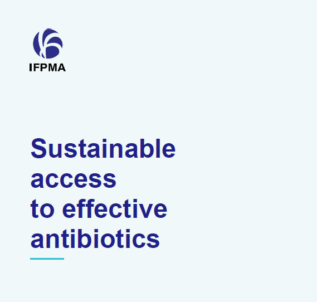From resistance to resilience: what could the future antibiotic pipeline look like?

The World Health Organization (WHO) has identified antimicrobial resistance (AMR) as one of the biggest global health threats facing humanity. As bacteria evolve and become resistant to existing antibiotics, the challenge is growing. Some estimates suggest that without reversing this trend, AMR could lead to 10 million deaths a year by 2050. To avoid this, we need to ensure that we have a continuous pipeline that delivers new, innovative antibiotics to treat patients with infections that have become resistant to existing antibiotics.
In a new report, we review the antibiotic pipeline data against bacterial pathogens identified by the WHO and other public health agencies as of the greatest concern, and present modelling data on the future of the pipeline.
The current antibiotic pipeline is not sufficient to
protect against increasing resistance
We find that:
- There have been only 10 new antibiotics or combinations approved by stringent regulatory authorities between 2017 and 2023, only 2 of which are defined as innovative by the WHO.
- None are considered to constitute a new class of antibiotics.
- There is currently just one antibiotic candidate in Phase III clinical trials across the four bacterial pathogens defined as a critical priority by WHO.
- Just two of the seven high-priority pathogens have innovative candidate antibiotics in development, with five having three or fewer candidates at any stage of clinical development.
- There is consensus from the WHO and many other experts that the pipeline is not sufficient to meet the demands of increasing resistance in the priority pathogens.
Modelling the future antibiotic pipeline
We worked with predictive health intelligence and data analytics experts from Airfinity on new modelling that helps to build an understanding of how this pipeline might evolve over the next 10 years. Based on a number of key assumptions, two scenarios were developed:
- Scenario one – No new incentives are introduced that could encourage
investment into antibiotic R&D. - Scenario two – Effective pull incentives are successfully introduced in 2025.
We find that:
- Without additional investment, the pipeline is expected to continue to gradually decline. This is particularly apparent from 2026 onwards when existing funding for late-stage (Phase II and III) studies is expected to decline. Under this scenario, in 10 years’ time, the pipeline is expected to contain 26 treatments, of which only 6 are in late stages of development.
- The introduction of effective pull incentives will attract significant additional investment, primarily from private investors, leading to a substantial impact on the future antibiotic pipeline. In this scenario, in 10 years’ time, it is expected there would be 19 new antibiotics approved and a pipeline consisting of 72 treatments in different stages of clinical research.
- The report also looks at the potential population health benefits from a more robust pipeline of antibiotics, suggesting a significant reduction in the burden of resistant infections across four WHO critical priority pathogens.
Discussion
Our modelling reinforces the economic and health imperative to act boldly. Maintaining the current unsustainable economics of antibiotic R&D will lead to a continued decline in the pipeline. However, with the right incentives in place, we can expect to see the pipeline strengthened – not just in terms of approved products and better access and availability supported by a sustainable market, but also in terms of number of candidates in clinical research.
“This analysis demonstrates why urgent action is needed if we are going to reinforce our pipeline of antibiotics and protect the world from rising drug resistance. Robust pull incentives are crucial in encouraging the research and development investment needed, and by demonstrating the impact that these can have, this report underscores the economic and health imperative for governments to act boldly in a year when the UN is focused on combatting AMR.” – James Anderson, Executive Director, Global Health, IFPMA



